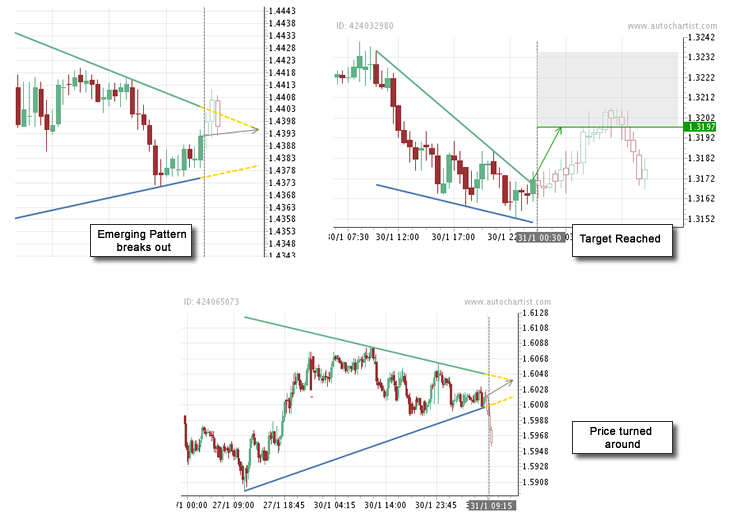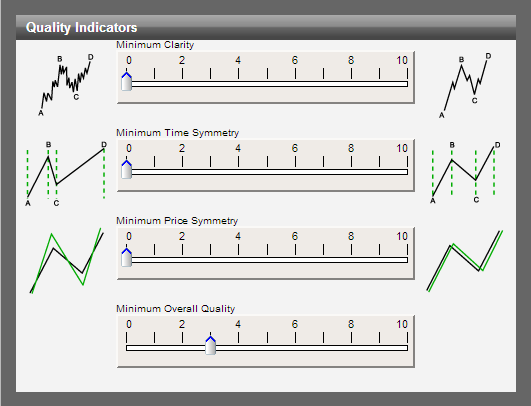Autochartist Support Overview of Pattern Types
Post on: 16 Март, 2015 No Comment

There are numerous types of patterns, all named according to the shapes that the price graphs form between the support and resistance lines. The general types of patterns include Triangles, Channels, Wedges, and Head-and-Shoulders.
Triangles
A triangle is formed between converging support and resistance lines. A negative sloping resistance line indicates a reducing level of profit taking or more uncertainty about the value of the stock. With a positive sloping support line the price levels are squeezed into a corner. Once the support or resistance line is broken, pressure that has built up as a result of uncertainty is released and a certain amount of momentum is added to the price change in the direction of the breakout.
There are specific variations of triangles that can occur, namely ascending and descending triangles. An ascending triangle has a horizontal resistance line and a descending triangle has a horizontal support line.
An ascending triangle usually occurs as a continuation of a bullish trend, while a descending triangle usually occurs as a continuation of a bearish trend.
Channels and Rectangles
A channel is formed between parallel support and resistance lines. This pattern usually indicates a relatively strong trend (up or down) with the price staying within the lines until breakout. A breakout from a channel indicates either a reversal in the trend or a change in the slope of the current trend.
Similar to a channel, a rectangle is a pattern formed between horizontal support and resistance lines.
Rectangles and Channels are sometimes referred to as Flags and Pennants depending on the slope of the initial trend and the slope of the breakout. A Flag would be defined as a Bullish Continuation Channel Down, or a Bearish Continuation Channel Up. A Pennant would be defined as a Bullish Continuation Triangle, or a Bearish Continuation Triangle.
Wedges
Wedges are similar to triangles in that these patterns are formed between converging support and resistance lines. However, where the support and resistance lines in a triangle have one positive and one negative slope, the support and resistance lines of a wedge would both have either a positive or negative slope. Wedges with positive slopes are called Rising Wedges and ones with negative slopes are Falling Wedges.
The most common wedges are found as breakouts in the opposite direction of the wedge. That is, bearish breakouts in a rising wedge, and bullish breakouts in a falling wedge.

Head and Shoulders
A Head and Shoulders pattern describes a share price movement that depicts the head and shoulders of a person. Head and Shoulders is a reversal pattern from a bullish trend to a bearish trend. The pattern starts when the price graph crosses the support line upwards before formation of the left shoulder, and is completed once the graph crosses the support line downwards after formation of the right shoulder.
An Inverse Head and Shoulders is similar in shape except that it is upside down and indicates reversal from bearish to bullish trend.
Double Top & Double Bottom
Double Top and Double Bottom are reversal patterns that touch either the support or resistance lines twice before reversing their trend. Look for a strong initial trend and a significant breakout in order to confirm the reversal.
Triple Top & Triple Bottom
Triple Top and Triple Bottom are reversal patterns that touch either the support or resistance lines three times before reversing their trend. This is a stronger indicator of a trend change than a Double Top or Double Bottom. Look for a strong initial trend and a significant breakout in order to confirm the reversal.














